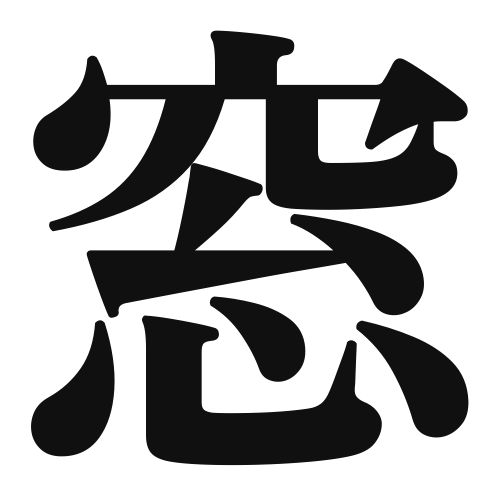1. Overview of Meaning
The kanji “窓” (mado) means “window.” It refers to an opening in a wall or structure that allows light and air to enter, often covered with glass.
2. Formation and Radicals
The kanji “窓” is a compound character, consisting of two parts: the radical “穴” (ana), which means “hole,” and the phonetic component “木” (ki), which means “tree.” This combination suggests a structure that has an opening, similar to how a tree has branches that reach out.
3. Examples of Usage
Common words and phrases that include “窓” are:
- 窓口 (まどぐち, madoguchi) – “window” or “counter” (as in a service window)
- 窓際 (まどぎわ, madogiwa) – “by the window”
Example sentence in daily conversation:
「窓を開けて、風を入れましょう。」(Mado o akete, kaze o iremashou.) – “Let’s open the window and let in some air.”
4. Synonyms and Antonyms
Similar kanji with related meanings include:
- 扉 (とびら, tobira) – “door,” which is an entryway but does not allow light in like a window does.
Antonyms include:
- 壁 (かべ, kabe) – “wall,” which is a solid structure that blocks light and air.
5. Cultural and Historical Background
In Japanese culture, windows are often associated with the concept of openness and connection to nature. Traditional Japanese homes feature sliding windows (shoji) that allow for flexibility in space and light.
Proverbs and idiomatic expressions related to “窓” include:
- 「窓の外を見る」(Mado no soto o miru) – “to look outside the window,” which can symbolize looking at the world or gaining perspective.
